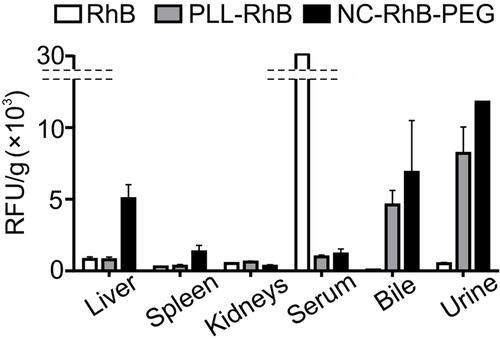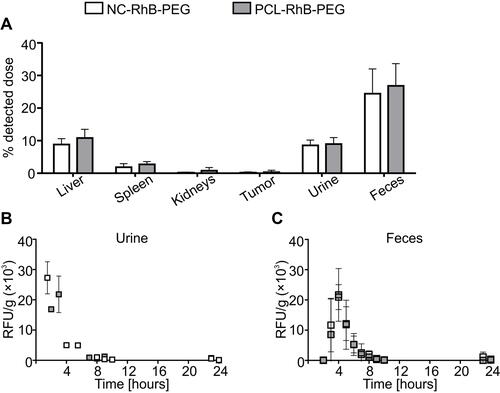Figures & data
Table 1 Characterization of Tested Nanocarriers
Figure 1 Biodistribution of core-shell polyelectrolyte nanocarriers and fluorescent products of their degradation.

Figure 2 Biodistribution profiles and elimination routes of polyelectrolytes nanocarriers with the different core structure.

Figure 3 Biodistribution profiles and elimination routes of differently labeled latex-based nanocarriers.

